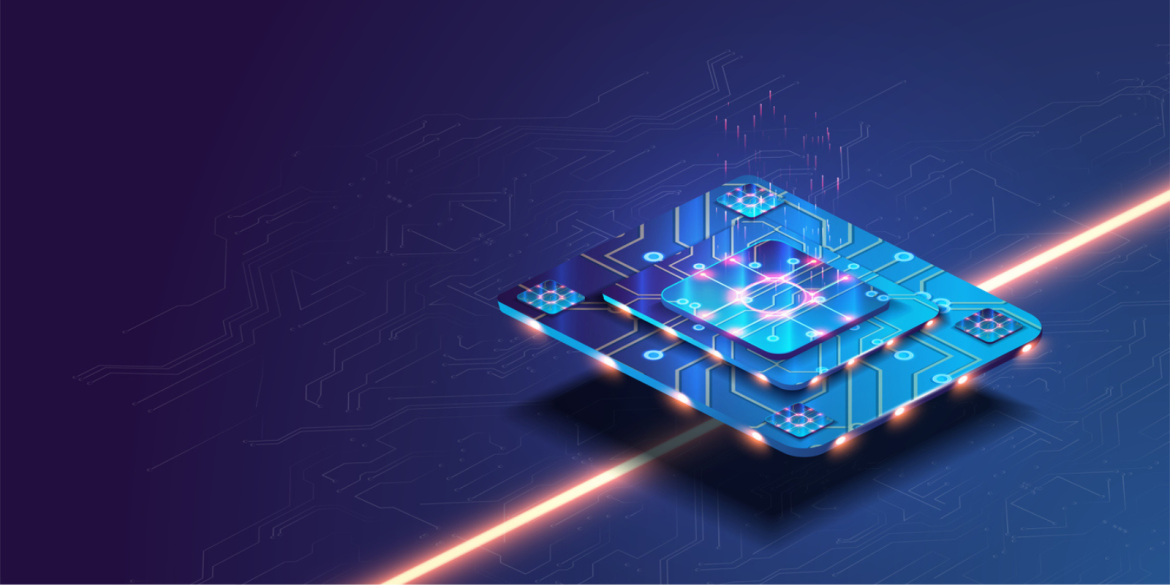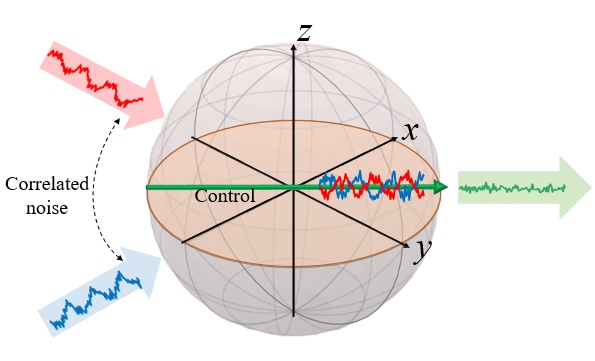
Researchers have developed a new method to significantly enhance quantum technology performance by using the cross-correlation of two noise sources to extend coherence time, improve control fidelity, and increase sensitivity for high-frequency sensing. This innovative strategy addresses key challenges in quantum systems, offering a tenfold increase in stability and paving the way for more reliable and versatile quantum devices.
Researchers have made a significant breakthrough in quantum technology by developing a novel method that dramatically improves the stability and performance of quantum systems. This pioneering work addresses the longstanding challenges of decoherence and imperfect control, paving the way for more reliable and sensitive quantum devices.
Quantum technologies, including quantum computers and sensors, hold immense potential for revolutionizing various fields such as computing, cryptography, and medical imaging. However, their development has been hampered by the detrimental effects of noise, which can disrupt quantum states and lead to errors.
Many traditional approaches to mitigating noise in quantum systems primarily focus on temporal autocorrelation, which examines how noise behaves over time. While effective to some extent, these methods fall short when other types of noise correlations are present.
The research was conducted by experts in quantum physics, PhD student Alon Salhov under the guidance of Prof Alex Retzker from Hebrew University, PhD student Qingyun Cao under the guidance of Prof. Fedor Jelezko and Dr. Genko Genov from Ulm University and Prof. Jianming Cai from Huazhong University of Science and Technology. They have introduced an innovative strategy that leverages the cross-correlation between two noise sources. By exploiting the destructive interference of cross-correlated noise, the team has managed to significantly extend the coherence time of quantum states, improve control fidelity, and enhance sensitivity for high-frequency quantum sensing.
Key achievements of this new strategy include:
Tenfold Increase in Coherence Time: The duration for which quantum information remains intact is extended ten times longer compared to previous methods.
Improved Control Fidelity: Enhanced precision in manipulating quantum systems leads to more accurate and reliable operations.
Superior Sensitivity: The ability to detect high-frequency signals surpasses the current state-of-the-art, enabling new applications in quantum sensing.
Alon Salhov said, “Our innovative approach extends our toolbox for protecting quantum systems from noise. By focusing on the interplay between multiple noise sources, we’ve unlocked unprecedented levels of performance, bringing us closer to the practical implementation of quantum technologies.”
This advancement not only marks a significant leap in the field of quantum research but also holds promise for a wide range of applications. Industries that rely on highly sensitive measurements, such as healthcare, stand to benefit enormously from these improvements.
The study titled “Protecting Quantum Information via Destructive Interference of Correlated Noise” is now available in Physical Review Letters and can be openly accessed at https://journals.aps.org/prl/abstract/10.1103/PhysRevLett.132.223601
Researchers:
Alon Salhov1, Qingyun Cao2,3, Jianming Cai3, Alex Retzker1,4, Fedor Jelezko2, and Genko Genov2
Institutions:
1. Racah Institute of Physics, The Hebrew University of Jerusalem
2. Institute for Quantum Optics, Ulm University, Germany
3. School of Physics, International Joint Laboratory on Quantum Sensing and Quantum Metrology, Huazhong University of Science and Technology, China
4. AWS Center for Quantum Computing, USA
Funding
Clore Israel Foundation Scholars Programme, the Israeli Council for Higher Education, and the Milner Foundation. This work was funded by the German Federal Ministry of Research (BMBF) by future cluster QSENS and projects DE-Brill (No. 13N16207), SPINNING, DIAQNOS (No. 13N16463), quNV2.0 (No. 13N16707), QR. X and Quamapolis (No. 13N15375), DLR via project QUASIMODO (No. 50WM2170), Deutsche Forschungsgemeinschaft (DFG) via Projects No. 386028944, No. 445243414, and No. 387073854, and Excellence Cluster POLiS European Union’s HORIZON Europe program via projects QuMicro (No. 101046911), SPINUS (No. 101135699), CQuENS (No. 101135359), QCIRCLE (No. 101059999) and FLORIN (No. 101086142), European Research Council (ERC) via Synergy grant HyperQ (No. 856432) and Carl-Zeiss-Stiftung via the Center of Integrated Quantum Science and technology (IQST) and project Utrasens-Vir. A. R. acknowledges the support of European Research Council grant QRES, Project No. 770929, Quantera grant MfQDS, Israel Science Foundation and the Schwartzmann university chair. J. M. acknowledges the National Natural Science Foundation of China (Grants No. 12161141011).
Pictures credit – the authors of the paper.
Image 1)
Title: Enhanced Quantum Memory and Sensitivity by Interfering Noise
Description:
Schematic representation of destructive interference of cross-correlated noise, control sequences and experimental setup.
Detailed description (from the paper):
(a) The qubit is subjected to environmental noise δ(t). Applying a resonant drive with Rabi frequency Ω1 creates a protected dressed qubit which decoheres mainly due to ε1(t) – the amplitude noise in Ω1. Applying a second drive with modulation frequency eΩ1, Rabi frequency Ω2 and amplitude fluctuations ε2(t), reduces decoherence due to ε1(t).
(b) If the cross-correlation, c, of ε1(t) and ε2(t) is nonzero, a detuning eΩ1 = Ω1 + c Ω2 2/Ω1 tilts the effective-drive axis and induces a destructive interference of the cross-correlated noise, resulting in a doubly-dressed qubit with a longer coherence time.
(c) Measurement sequences for standard and correlated double drive (DD) protocols. (d) Experimental setup and level
scheme of the NV center

Image 2)
Title: Enhanced Quantum Memory and Sensitivity by Interfering Noise
Description: A Bloch-sphere of a qubit subjected to cross-correlated noise (blue and red). The method destructively interferes this noise, resulting in superior performance.

The Hebrew University of Jerusalem is Israel’s premier academic and research institution. With over 25,000 students from 90 countries, it is a hub for advancing scientific knowledge and holds a significant role in Israel’s civilian scientific research output, accounting for nearly 40% of it and has registered over 11,000 patents. The university’s faculty and alumni have earned eight Nobel Prizes and a Fields Medal, underscoring their contributions to ground-breaking discoveries. In the global arena, the Hebrew University ranks 86th according to the Shanghai Ranking. To learn more about the university’s academic programs, research initiatives, and achievements, visit the official website at http://new.huji.ac.il/en
